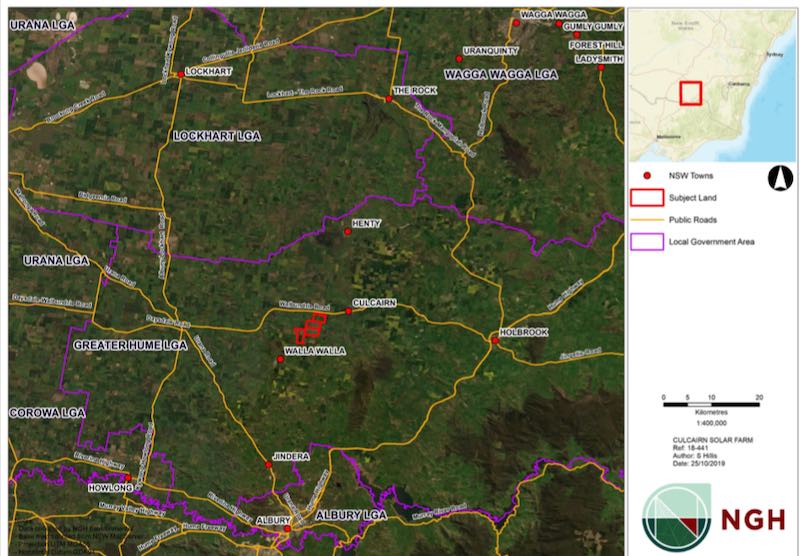French renewables developer Neoen is making headway on what promises to be one of Australia’s biggest solar projects yet, the 402MW (DC) Culcairn Solar Farm, proposed for the southeast Riverina region of New South Wales.
Neon Australia late last month submitted its Environmental Impact Statement (EIS) for the “state significant” project, for a period of exhibition that ends February 27.
All going to plan, Neoen aims to start work on the massive project – which would install a big battery with 100MW/200MWh of storage capacity alongside the 1.1 million single-axis tracker PV panels – in Q4 of this calendar year.
The project would deliver electricity to the grid via an on-site substation that would connect via overhead cables to a 330kV transmission line that already runs through the project area.
In the EIS, Neoen says the solar farm would provide a major contribution to Australia’s emissions reduction effort, generating more than 800,000MWh of renewable electricity a year – enough to power around 140,000 homes.
The addition of the battery, says Neoen, would ensure the provision of “dispatchable renewable electricity … during peak demand periods to place maximum downward pressure on prices, for example during evening times post-sunset.”
Like the vast majority of big solar projects in Australia, Culcairn is proposed for construction on productive farm land – and as a project of state significance, this should not prove a hindrance to it being approved.
But according to a May 2019 report from ABC Rural, there could be some push back from local farmers who argue the land should be used to produce food, not electricity.
The report notes that local landholder Sharon Feuerherdt – whose crop land hosts some of TransGrid’s high-voltage powerlines – knocked back a multi-million dollar offer from Neoen to put solar panels on her land.
Further, Feurerherdt told ABC Rural that she intends to fight the construction the Culcairn project, which would cover 1,300 hectares of neighbouring (consenting) properties, including 7km of her own property’s frontage.
In comments to ABC at the time, Neoen Australia’s head of development, Garth Heron, said large-scale renewable projects needed to be built next to existing poles and wires, which tended to be in regional areas.
“There are few places you can actually go. You basically have to follow your large poles and wires, which are between the large metropolitan centres,” he said.
“The cost of brand-new transmission lines could add up to 30 per cent to the power bill,” he said.
“Farming land is extremely important, but at the same time electricity is also important.
“It’s about achieving a balance, making sure that we’re preserving as much farming land as we can, but also building projects that can contribute to lowering power bills across the state.”






